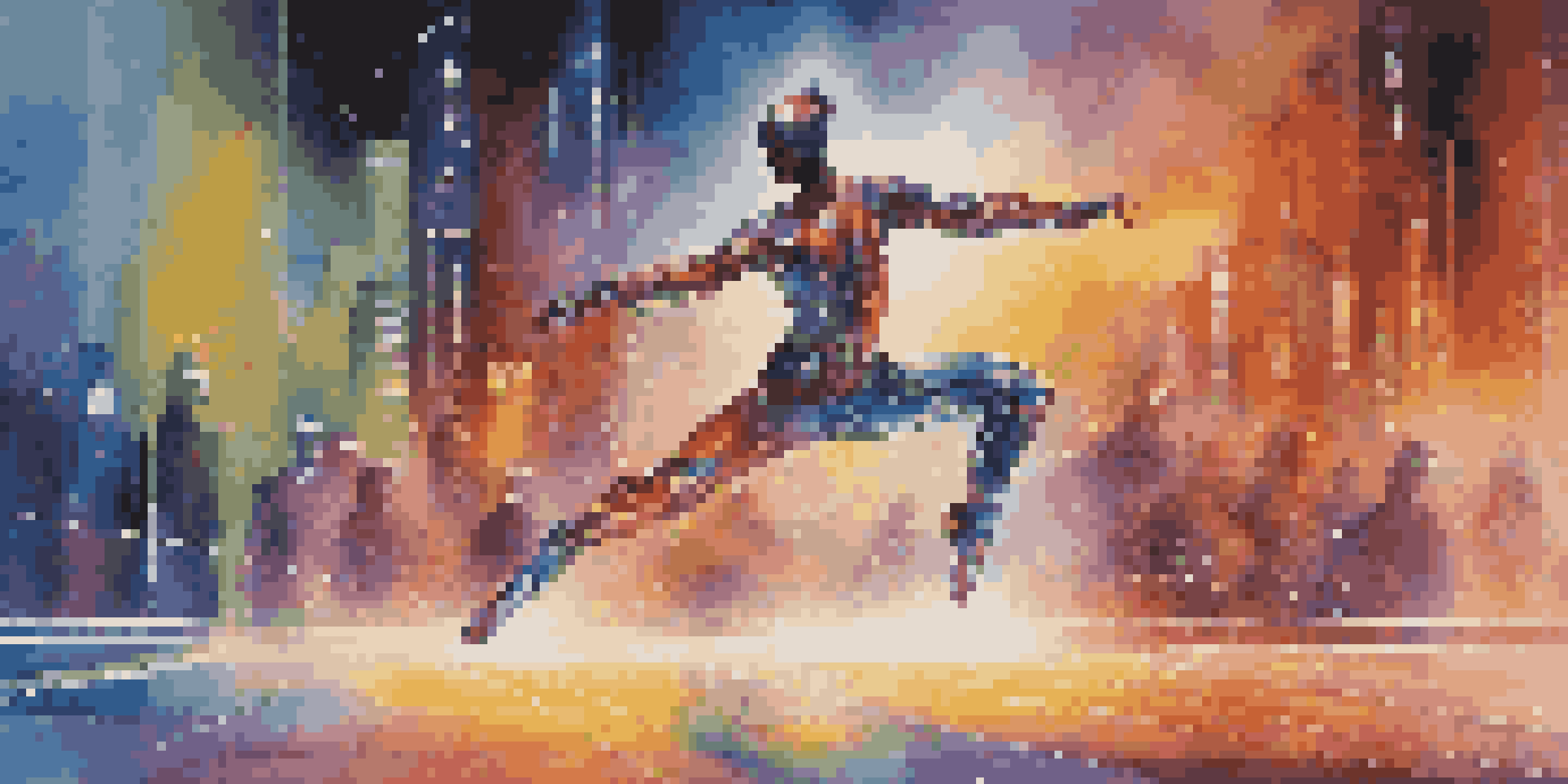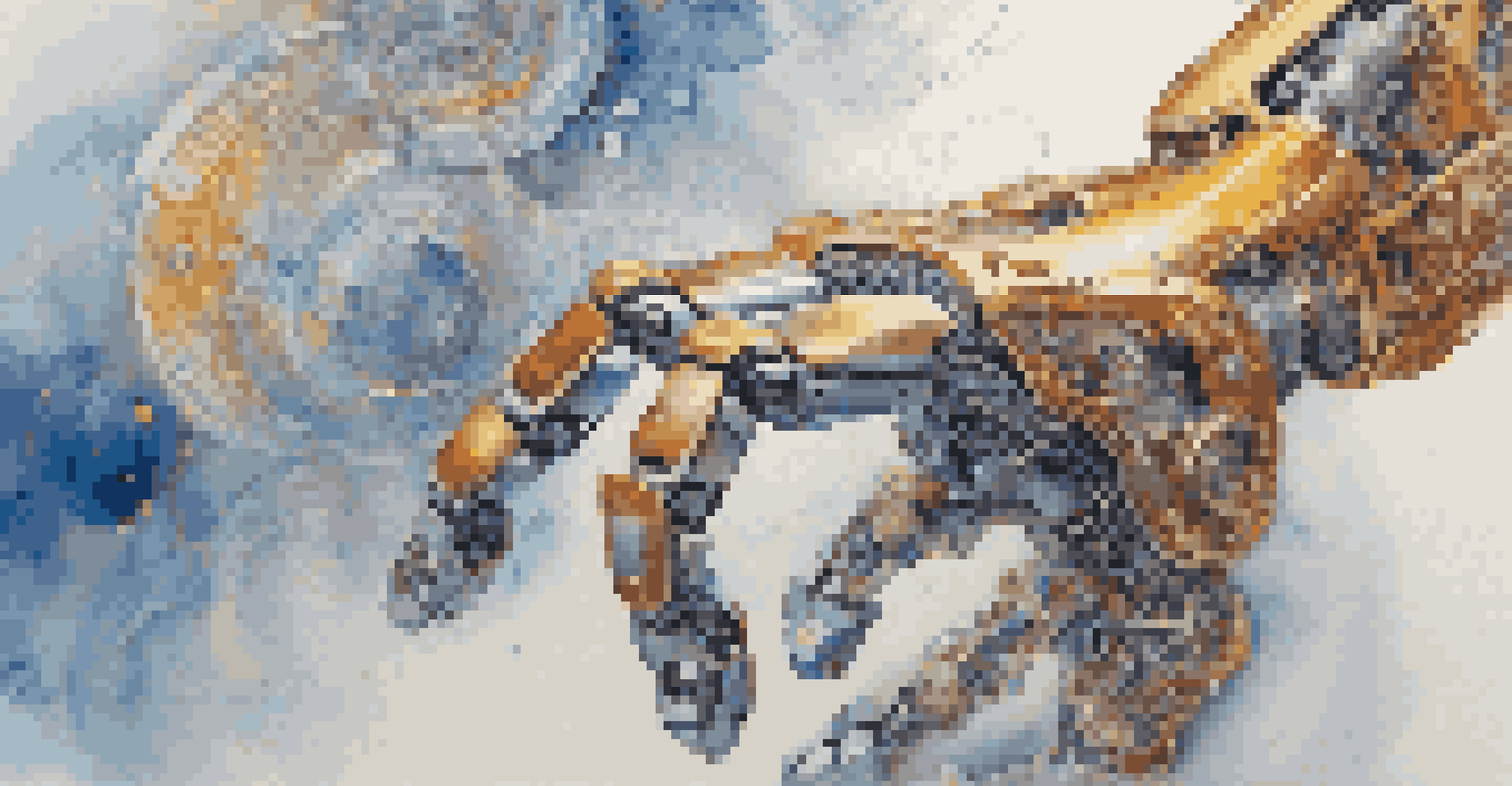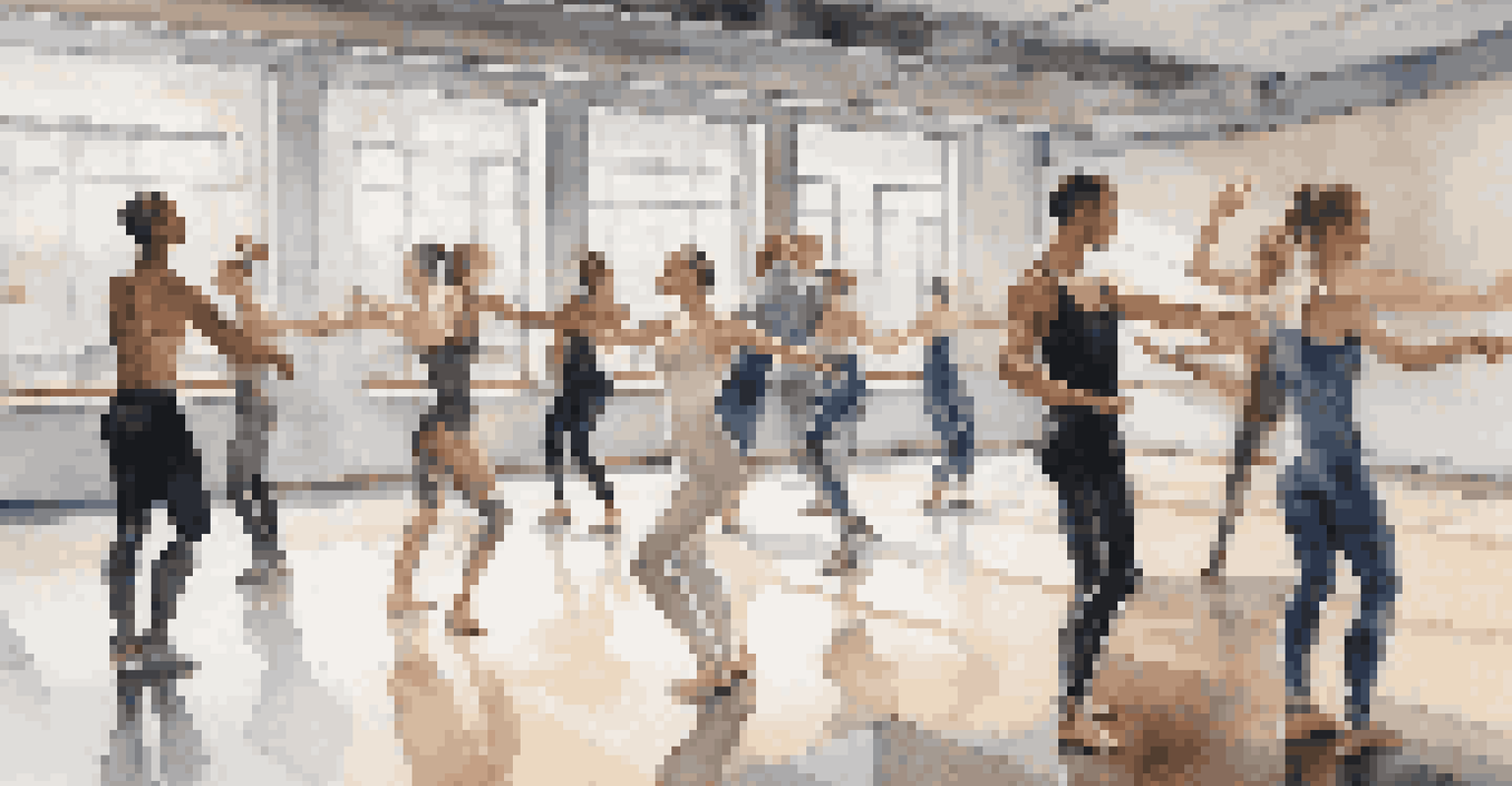Dance and Robotics: Exploring Movement Through Technology

The Intersection of Dance and Robotics in Modern Art
In recent years, the worlds of dance and robotics have begun to intertwine, creating a unique blend of art and technology. This fusion encourages artists and engineers to collaborate, pushing the boundaries of what movement can be. By leveraging robotics, choreographers can explore new forms of expression that were previously unimaginable, leading to innovative performances that captivate audiences.
The intersection of dance and robotics is where art meets technology, creating new forms of expression that challenge our understanding of movement.
For instance, robotic systems can mimic human movements or even create entirely new styles of dance. These robotic dancers can be programmed to perform intricate routines, allowing for a level of precision that is difficult for human performers to achieve. This not only broadens the scope of what dance can entail but also challenges our traditional understanding of movement and expression.
Moreover, as technology evolves, so does the potential for creating immersive experiences. Imagine a performance where robotic dancers interact seamlessly with human performers, enhancing the storytelling aspect of dance. This collaboration opens the door to a myriad of possibilities, inviting audiences to engage with art in ways they have never experienced before.
How Robotics Enhances Dance Choreography
Robotics can play a pivotal role in the choreography process, offering tools that enhance creativity. Choreographers can use motion capture technology to analyze and refine their movements, allowing them to visualize their ideas in new ways. This technological assistance can lead to more dynamic and complex routines that push artistic boundaries.

Additionally, robotic systems can aid in the rehearsal process, providing real-time feedback on performance quality. For instance, sensors can track a dancer's movements and suggest improvements, leading to a more polished final performance. This kind of support not only saves time but also fosters a deeper understanding of movement mechanics.
Dance Meets Robotics for Innovation
The collaboration between dance and robotics opens up new artistic expressions and performance possibilities.
This integration of technology into choreography also allows for experimentation with unconventional styles and rhythms. Choreographers can program robots to dance alongside human performers, challenging dancers to adapt their movements to accommodate their mechanical counterparts. This interaction can spark new ideas and inspire fresh artistic directions.
The Role of Artificial Intelligence in Dance Robotics
Artificial intelligence (AI) is making waves in the field of dance robotics, enabling machines to learn and adapt over time. AI algorithms can analyze vast amounts of dance data, identifying patterns and styles that can be replicated or reimagined by robotic performers. This capability allows for a more fluid and responsive dance experience.
As technology evolves, so does the potential for creating immersive experiences that redefine the audience's relationship with art.
For example, AI can help robots understand the nuances of human movement, from rhythm to emotional expression. By studying human dancers, robots can learn to perform in a way that feels more organic and engaging to audiences. This creates a bridge between the mechanical and the human, fostering a deeper connection between performers and spectators.
Moreover, the integration of AI into dance can lead to innovative performances that evolve in real-time. Imagine a dance piece where the robot adjusts its movements based on audience reactions, creating a unique experience for every performance. This level of interactivity could redefine how we think about live art and its relationship with technology.
Examples of Dance and Robotics in Action
Several exciting projects highlight the synergy between dance and robotics, showcasing the innovative potential of this collaboration. One notable example is the work of the company KUKA, which has developed robotic arms that perform intricate dance routines alongside human dancers. These performances not only entertain but also provoke thought about the future of dance and technology.
Another inspiring example is the collaboration between choreographer Wayne McGregor and robotics expert Dr. Hannes Hölzl, who created a performance that features a robotic partner. This project explores themes of connection and separation, illustrating how technology can enhance the emotional depth of a dance piece. Such collaborations challenge conventional notions of performance and invite deeper engagement.
AI Enhances Dance Robotics Experience
Artificial intelligence allows robotic performers to learn from human dancers, creating a more engaging and interactive dance experience.
These examples demonstrate the diverse ways in which dance and robotics can coexist and enrich one another. As artists continue to explore this intersection, we can expect to see even more innovative performances that redefine the boundaries of both fields.
The Impact of Technology on Audience Engagement
The fusion of dance and robotics not only transforms performance but also enhances audience engagement. By incorporating technology into dance, performances can become more immersive and interactive, drawing viewers into the experience. This level of engagement encourages audiences to form a deeper emotional connection with the art, making it more memorable.
For instance, using augmented reality (AR) or virtual reality (VR) technology allows audiences to experience dance in entirely new ways. Imagine attending a dance performance where you can interact with robotic dancers or manipulate the environment around them. This kind of interactivity creates a unique experience that captivates and inspires.
Furthermore, technology can help expand the reach of dance performances, making them accessible to a broader audience. Live-streaming performances or creating digital content allows people from all over the world to engage with art that they might not otherwise have access to. This democratization of dance fosters a greater appreciation for the art form and its evolution.
Challenges at the Intersection of Dance and Robotics
While the fusion of dance and robotics presents exciting opportunities, it also comes with its share of challenges. One significant concern is the potential loss of the human element in dance, as technology takes on a more prominent role. Many purists worry that relying too heavily on robots may dilute the emotional depth and authenticity that human dancers bring to the art form.
Additionally, the technical complexities involved in creating robotic dancers can pose significant hurdles. Designing robots that can move gracefully and fluidly, mimicking human movements, requires advanced engineering and a deep understanding of dance dynamics. This complexity can make collaboration between artists and engineers challenging, as both parties must bridge the gap between their respective fields.
Technology Boosts Audience Engagement
Integrating technology in dance performances enhances audience interaction and accessibility, making art more memorable and widespread.
Despite these challenges, the conversation around dance and robotics is crucial for the evolution of both fields. By addressing concerns and exploring the boundaries of technology, artists and engineers can work together to create innovative solutions that respect the integrity of dance while embracing the possibilities offered by robotics.
The Future of Dance in a Robotic World
As we look to the future, the relationship between dance and robotics is poised to evolve even further. With advancements in technology, we can expect to see more sophisticated robotic systems that can engage in complex dance routines, responding to human performers in real-time. This evolution could lead to entirely new genres of dance that blend human creativity with robotic precision.
Moreover, as technology continues to advance, we might witness the rise of virtual dance experiences that blend performance with digital interactivity. Imagine attending a concert where dancers and robots create a mesmerizing spectacle, enhanced by visual effects and audience participation. Such experiences could redefine how we experience art and performance.

Ultimately, the future of dance in a robotic world holds vast potential for innovation and creativity. As artists embrace technology as a tool rather than a replacement, we can look forward to a vibrant landscape where dance and robotics coexist harmoniously, inspiring future generations of performers and audiences alike.